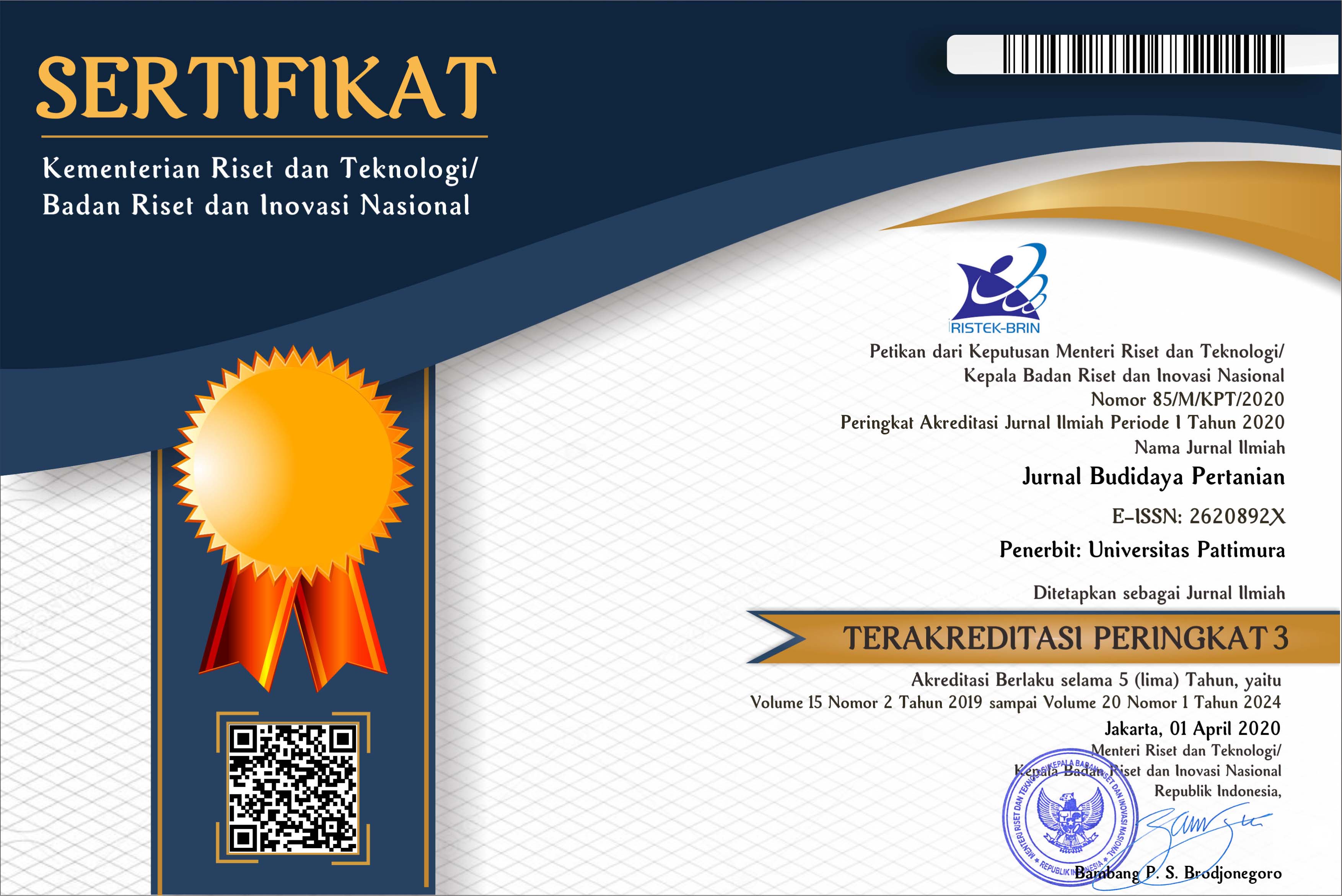Pengembangan Ekowisata Berbasis Kesesuaian dan Daya Dukung Kawasan Pantai (Studi Kasus Pulau Marsegu Kabupaten Seram Bagian Barat)
Abstract
This study aimed to determine the suitability of land and the carrying capacity of the coastal area for ecotourism development in the Nature Tourism Park (TWA) of Marsegu Island. The method used is survey method, with primary and secondary data collection through observation technique. Primary data collection includes the taking of aquatic environmental data, the physical environment of the coast, the area used for tourism activities and the time spent by tourists in the coastal area. Data analysis using coastal suitability index and coastal carrying capacity. Area of ​​white sandy occupies the eastern part of the central part to the north of Marsegu Island with a length of 1.68 km. White sandy beaches with a 20-30 m wide beach provide space for a variety of tourist activities, supported by beautiful natural sea scenery, and high water brightness (90 %), low current velocity (0,16 m/sec) causing this beach can be a promising tourist destination. The result of the analysis of the index of the suitability of coastal ecotourism shows that the white sandy area of ​​Marsegu Island is "Very Appropriate" for tourism activities with IKW value = 95,42. Likewise, the analysis of the carrying capacity of the area shows that the white sandy area of ​​Marsegu Island has the carrying capacity of the area 68 person/day.
Downloads
References
Balai Konservasi Sumberdaya Alam. 2010. Rencana Pengelolaan Jangka Panjang Taman Wisata Alam Pulau Marsegu periode 2011- 2030 Kabupaten Seram Bagian Barat Provinsi Maluku, Ambon.
Balai Konservasi Sumberdaya Alam. 2015. Laporan Tahunan. Kementerian Lingkungan Hidup dan Kehutanan. BKSDA Maluku.
Bengen, D.G. 2002. Sinopsis Ekosistem Sumberdaya Alam Pesisir dan Laut serta Prinsip Pengelolaannya, Bogor. Pusat Kajian Sumberdaya Pesisir dan Lautan, Institut Pertanian Bogor. Bogor
Cesar H.L., L. Burke, and L. Pet-Soede. 2003. The Economic of World Wide Coral Reef Degradation. Cesar Environmental Economic. Consulting: Arnhen (Netherlands).
Fandeli, C. 2002. Dasar-Dasar Management Kepariwisataan Alam. Liberty. Yogyakarta
Handayawati. 2010. Potensi Wisata Alam Pantai-Bahari. PM PSLP PPSUB Kementrian Kebudayaan dan Pariwisata Republik Indonesia.2002. Blue Print Pariwisata. Jakarta: Kementerian Kebudayaan dan Pariwisata.
Hazeri, G. 2014. Studi Kesesuaian Pantai Laguna Desa Merpas Kecamatan Nasal Kabupaten Kaur sebagai Daerah Pengembangan Pariwisata dan Konservasi. Skripsi. Fakultas Pertanian. Universitas Bengkulu.
Irwanto, 2007. Analisis vegetasi untuk Pengelolaan Hutan Lindung Pulau Marsegu Kabupaten Seram Bagian Barat. Thesis Universitas Gadjah Mada.
Johan, Y., F. Yulianda, V.P. Siregar, dan I. Karlina. 2011. Pengembangan wisata bahari dalam pengelolaan sumberdaya Pulau-pulau kecil berbasis Kesesuaian dan daya dukung. Studi Kasus Pulau Sebesi Provinsi Lampung. Prosiding Seminar Nasional: Pengembangan Pulau-Pulau Kecil 2011.
Menteri Lingkungan Hidup Nomor 51 Tahun 2004. Tentang Baku Mutu Air Laut. Lampiran II tentang Baku Mutu Air Laut untuk Wisata Bahari.
Nybakken, J.W. 1992. Biologi Laut. Suatu Pendekatan Ekologi. Gramedia Jakarta.
Yulianda, F. 2007. Ekowisata Bahari Sebagai Alternatif Pemanfaatan Sumberdaya Pesisir Berbasis Konservasi. Makalah Seminar Sains pada Departemen Manajemen Sumberdaya Perairan. Fakultas Perikanan dan Ilmu Kelautan IPB. Bogor.
Yulisa, E.N., Y. Johan, dan D. Hartona. 2016. Analisis kesesuaian dan daya dukung ekowisata pantai kategori rekreasi pantai Laguna Desa Merpas Kabupaten Kaur. Jurnal Enggano 1: 97-111.

 Accreditation is valid for 5 years, starting from Volume 15 Issues 2 December 2019 up to Volume 20 Issue 1 June 2024.
Accreditation is valid for 5 years, starting from Volume 15 Issues 2 December 2019 up to Volume 20 Issue 1 June 2024.






